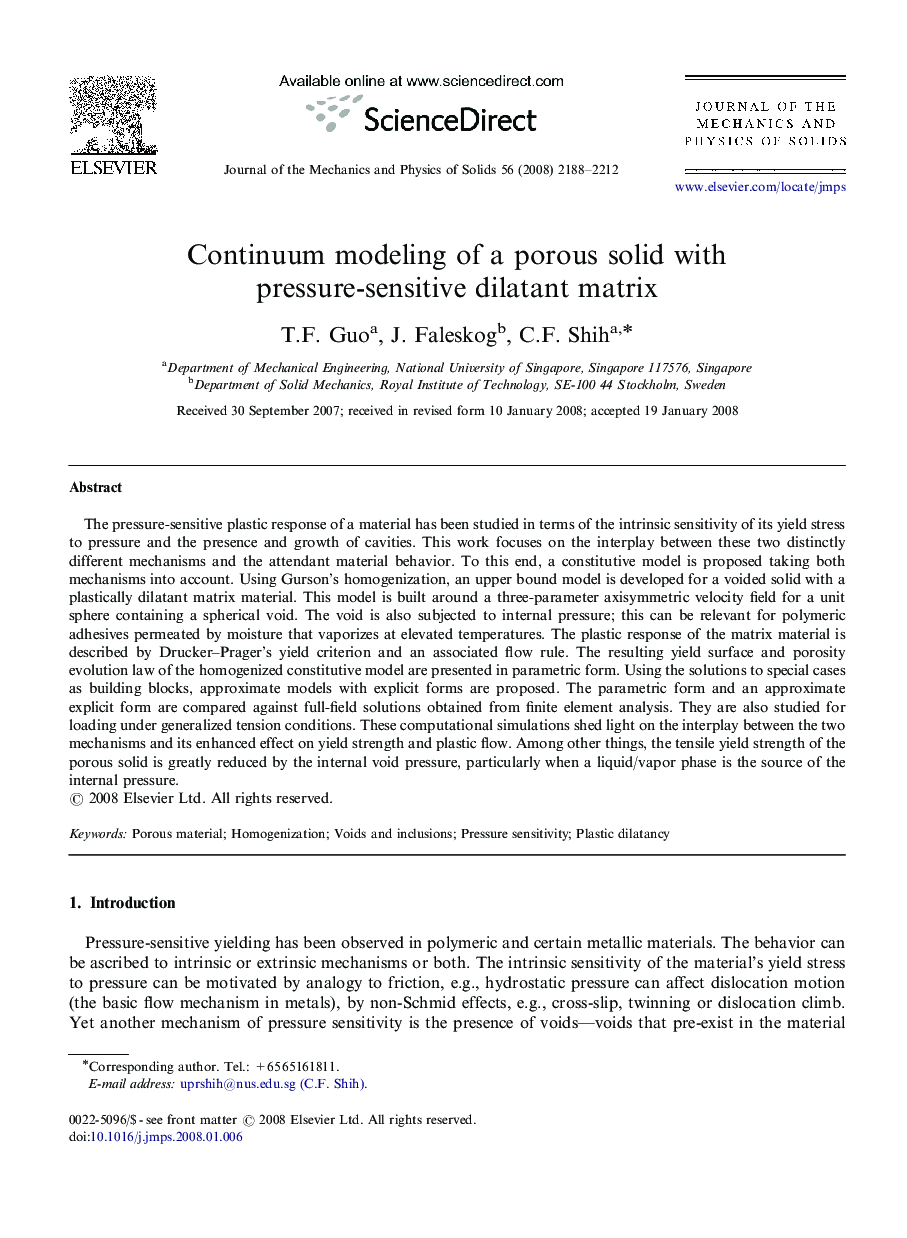| کد مقاله | کد نشریه | سال انتشار | مقاله انگلیسی | نسخه تمام متن |
|---|---|---|---|---|
| 797431 | 1467148 | 2008 | 25 صفحه PDF | دانلود رایگان |

The pressure-sensitive plastic response of a material has been studied in terms of the intrinsic sensitivity of its yield stress to pressure and the presence and growth of cavities. This work focuses on the interplay between these two distinctly different mechanisms and the attendant material behavior. To this end, a constitutive model is proposed taking both mechanisms into account. Using Gurson's homogenization, an upper bound model is developed for a voided solid with a plastically dilatant matrix material. This model is built around a three-parameter axisymmetric velocity field for a unit sphere containing a spherical void. The void is also subjected to internal pressure; this can be relevant for polymeric adhesives permeated by moisture that vaporizes at elevated temperatures. The plastic response of the matrix material is described by Drucker–Prager's yield criterion and an associated flow rule. The resulting yield surface and porosity evolution law of the homogenized constitutive model are presented in parametric form. Using the solutions to special cases as building blocks, approximate models with explicit forms are proposed. The parametric form and an approximate explicit form are compared against full-field solutions obtained from finite element analysis. They are also studied for loading under generalized tension conditions. These computational simulations shed light on the interplay between the two mechanisms and its enhanced effect on yield strength and plastic flow. Among other things, the tensile yield strength of the porous solid is greatly reduced by the internal void pressure, particularly when a liquid/vapor phase is the source of the internal pressure.
Journal: Journal of the Mechanics and Physics of Solids - Volume 56, Issue 6, June 2008, Pages 2188–2212